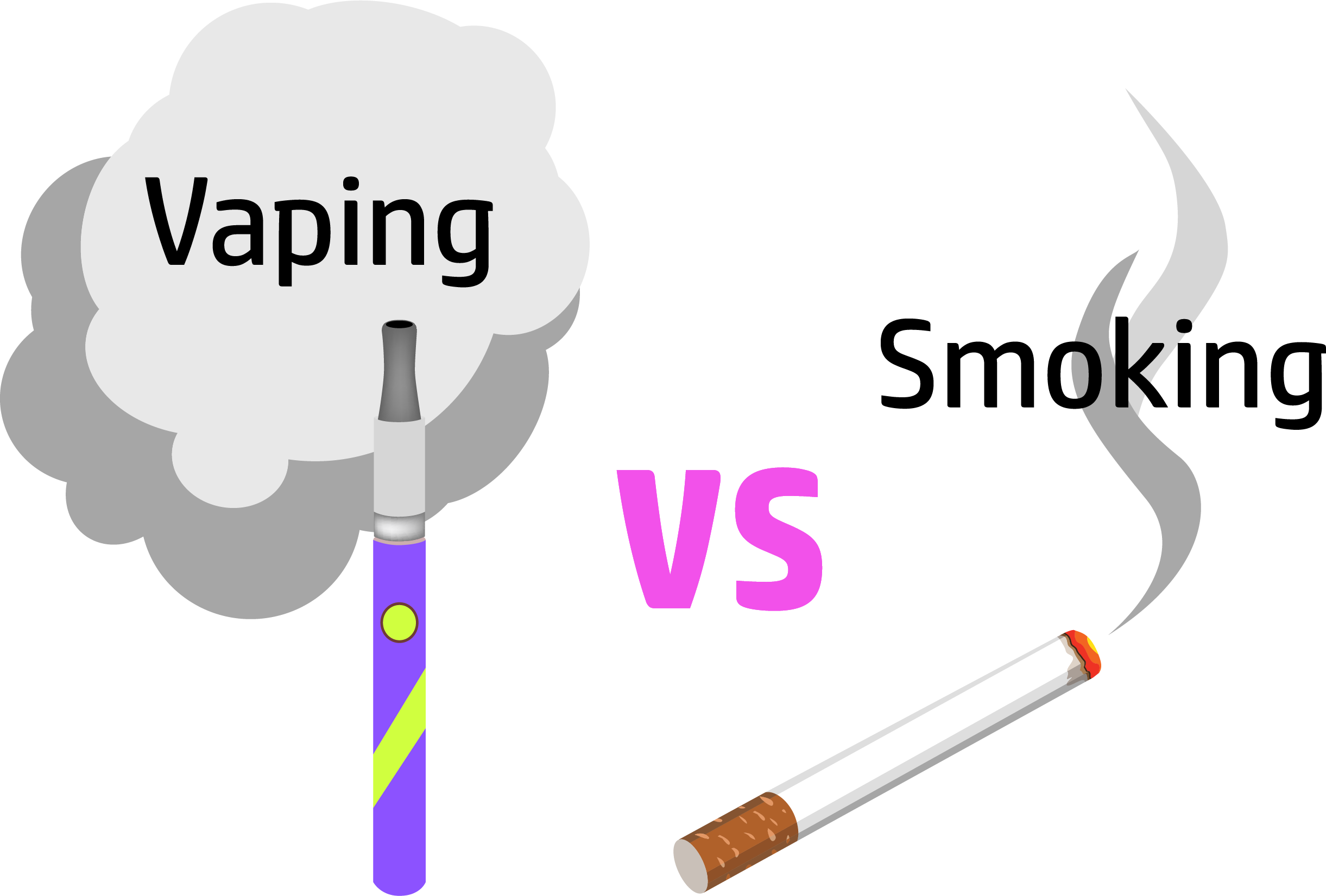What's the difference between smoking and vaping?Updated 6 months ago

Smoking vs. Vaping: THE Key Differences
The fundamental distinctions between these two Here's a summary of the key points:
1.) Process:
- Smoking involves combustion, meaning it burns dried tobacco at very high temperatures.
- Vaping uses aerosolization (or vaporization), heating a liquid (e-liquid) at much lower temperatures to create an aerosol, commonly called vapor.
2.) Substance Inhaled:
- Smoking produces smoke, a complex mix of thousands of chemicals, including over 70 known carcinogens like tar and carbon monoxide.
- Vaping produces an vapor primarily from nicotine (optional), flavorings, propylene glycol (PG), and vegetable glycerin (VG). While it can contain some potentially harmful substances, they are generally in much lower quantities than in cigarette smoke.
3.) Primary Harmful Byproducts:
- Smoking generates tar (which coats the lungs), carbon monoxide (a poisonous gas), and numerous other toxins directly from burning tobacco.
- Vaping eJuice that is NOT from a Reputable supplier and trusted source can contain potentially harmful substances, or and especially when there is improper use by the user.
4.) Nicotine Delivery:
- Both deliver nicotine through lung absorption, but the efficiency and speed can vary in vaping depending on the device and e-liquid.
5.) Smell & Residue:
- Smoking creates a strong, lingering odor of burnt tobacco and leaves ash and tar residue.
- Vaping typically has a less intense, flavor-related odor that dissipates quickly and can leave a minimal, less noticeable residue.
6.) Health Risks (General Consensus):
- Smoking has extremely high and well-established health risks, linked to many severe diseases including cancer, heart disease, and respiratory illnesses.
- Vaping is considered significantly less harmful than smoking by many public health bodies, but it's not risk-free. Long-term effects are still being researched, and it carries risks like nicotine addiction and potential lung issues. It's not recommended for non-smokers, youth, or pregnant women.
7.) Secondhand Exposure:
- Secondhand smoke is a known health risk to bystanders.
- Secondhand Vapor from vaping contains nicotine and other chemicals at much lower levels than secondhand smoke. While considered less harmful, its long-term effects are still under investigation.
The Primary differences between combustion (smoking) vs. Vapor (vaping). is the Burning of tobacco creates thousands of harmful chemicals, many of which are absent or in much lower concentrations in vape aerosol. While vaping is seen as a less harmful alternative for adult smokers who can't quit nicotine, it's not without its own risks.